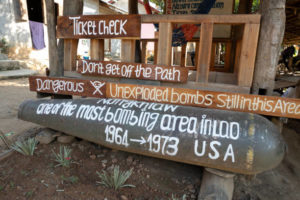
Image credit: Reuters
Beirut, Lebanon – The month of August has been one of the darkest for the Middle Eastern country of Lebanon; a devastating August 4 explosion in Beirut took the lives of 200 people, and injured 5000 others. This catastrophe resulted in public outrage, such that brought the downfall of the Lebanese government.
Before the blasts occurred, the port of Beirut saw a large scale fire next to its huge grain silos.
The Current Affairs Times has in detail analyzed this event, in their attempt to understand what happened.
What Happened?
Next to the grain silos, the roof of Warehouse No. 12 caught fire and was then exposed to a huge initial blast, followed by a series of smaller blasts. 30 seconds later, a colossal explosion sent a mushroom cloud into the air and a supersonic blastwave radiated throughout the city. Buildings around the port were impacted by these waves, and the waves caused severe damage to the remaining areas around the city of Beirut.
This blast resulted in the destruction of immediate areas around the port, creating a flooded crater 460 feet wide. Many of the satellite images from geologists reflect a ship blown out of the water into the dockside. It is alleged that the shockwaves blew out the windows of the only passenger terminal at Beirut International Airport, approximately five miles from the destroyed port.
The explosion was so violent that this blast could be heard in Cyprus, 124 miles across the Mediterranean. It was equivalent to a 3.3 magnitude earthquake, asserted seismologists of the U.S. Geological Survey. A University of Sheffield team claimed the explosion was equivalent to 1,000-1,500 tons of TNT, which is one-tenth the intensity of the nuclear bomb that was dropped on Hiroshima in 1945.
The government in Lebanon claimed that 2,750 tons of ammonium nitrate were stored in an unsafe condition at one of the warehouses in that port. Lebanon’s Prime Minister, Hassan Diab, reiterated this position to Al Jazeera.
According to the BBC, a similar number of chemicals arrived on a Moldovan-flagged cargo ship, docked in Beirut in 2013. Due to technical problems in a journey from Georgia to Mozambique, this ship was banned post inspection, eventually abandoned by its owners. The cargo from this ship was transferred to Warehouse No. 12, per a court order.
Beirut’s Governor Marwan Abboud confirmed that around 300,000 people were homeless, and the financial losses could total 15 Billion U.S. dollars.
Lives Lost
Jean- Marc Bonfils, a French architect, was restoring buildings damaged during Beirut’s civil war, and was broadcasting the incident immediately following the first explosion. The second explosion, however, took his life. Upon hearing of his death, the French Cultural Ministry expressed “grief.”
Sarah Fares, a first responder firefighter, lost her life along with a diplomat from the German embassy. The Orient Queen was completely damaged, with two deaths and seven injuries on board. Many are still said to be missing.
How Will the Lebanese Government Respond?
As of publication, Beirut’s governor Marwan Abboud confirmed twenty arrests have been made.
The prime minister offered the entire government’s resignation six days after the explosions. Despite this offer, the Lebanese government resorted to blaming political figures of the country for this blast, without taking responsibility itself. Badri Daher, Director General of Lebanese Customs, alleged that Custom Office warnings concerning the danger of the stored ammonium nitrate fell on deaf ears, on multiple occasions. Their recommendation of removing and re-exporting the stored ammonium nitrate was ignored. Documents released after the blasts indicate that Customs did in fact send letters involving the ammonium nitrate to the Lebanese government between 2014 to 2017.
However, investigative experts have suggested that these letters did not follow protocol or procedures. Investigative journalist Riyad Qobaissi claimed that upon requesting more information regarding the matter, customs officials sent the same information to him repeatedly. The question of why no action was taken at that time remains unanswered.
The twenty arrests included the officials who were responsible for the management of the port, who have been put under house arrest. Lebanon’s Minister of Public Works, Michael Najjar confirmed to the media that he spoke to the port’s General Manager two days before this explosion regarding the chemicals. The General Manager stated that if no minister knew what was in those hangars and containers, it was not his job to know.
The FBI has been involved, and a team is expected to reach Lebanon the weekend of August 22 for an independent investigation. U.S. Undersecretary for Political Affairs David Hale asked for a thorough, detailed and transparent investigation, though he stated that this investigation was a result of an invitation from the Lebanese authorities.
The original cause of the fire igniting 3,000 tons of ammonium nitrate has not yet been determined. Many top Lebanese officials, including President Michel Aoun, have declined independent investigations, calling that process “a waste of time.”
After the resignation of the Lebanese government, there is no government in Lebanon and no determination has been made as to who will become the next prime minister, nor has any potential candidate emerged.
Were Other Organizations Involved?
Hassan Nasrallah, leader of the Hezbollah group, claimed that he did not trust any international investigation, referring to the FBI’s assistance in this matter. He further went on to state that any international investigation would need to clear Israel of any responsibility and threatened that “Israel would be met with an equally devastating response if the investigation pointed to any involvement.”
Meanwhile, Israel denied any involvement and as of publication, there is no evidence to suggest that Israel could have been involved. David Hale relayed the importance of having complete state control over all ports and borders, considering that Hezbollah currently holds influence over those in Lebanon. The United States considers Hezbollah a terrorist group and alleges that it misuses government funds.
Has the Damage Already Been Done?
Despite aid appeals from many international organizations, including the United Nations’ $565 million appeal, the people of Beirut are extremely angry, and assert that the government’s corruption, mismanagement and uncertainty caused this massacre. Citizens of Beirut also believe that the government has not been held accountable for their negligence.
Following the explosions, Beirut saw severe clashes between police and the public as demonstrators argued for transparency from the Lebanese government. There have been many demonstrations and violent protests.
One of the victims said, “We are waste-people in a wasteland. We are waste people who die and it does not matter.”
Many psychologists have resorted to the streets in an attempt to help victims of torture in Beirut, going door to door to provide emergency mental health care.
What can we expect next, and what will the continued aftermath of this deadly explosion bring to Lebanon?
Image credit: Reuters
Sources:
- “Beirut explosion: What we know so far”
- “After devastating Beirut explosion, trauma sinks in”
- “Beirut explosion: FBI to take part in Lebanon investigation”
Afia is a lawyer, journalist, an avid traveler, an avid reader, a foodie, and an amateur singer. She enjoys instrumental music with her glass of wine ?






